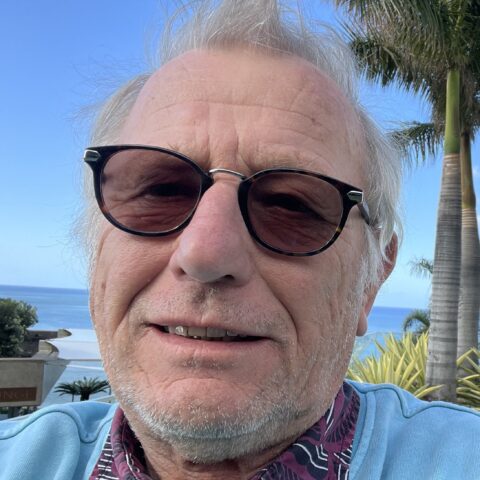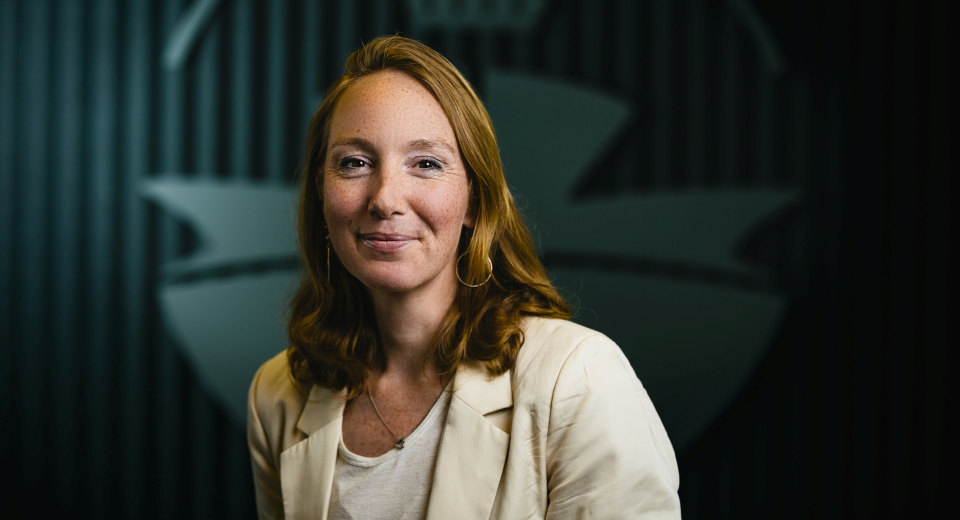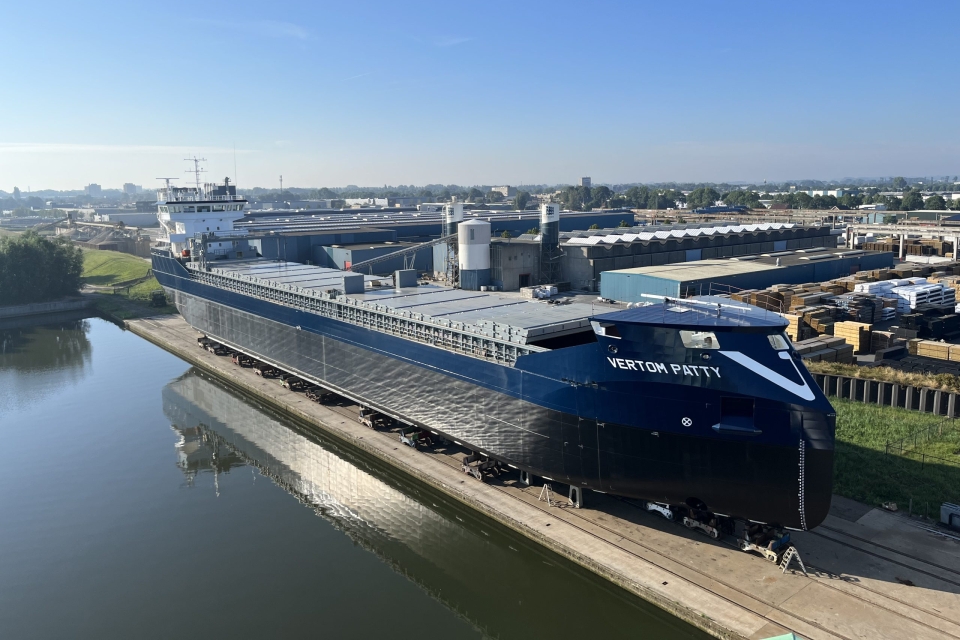From the magazine – If the Dutch shipping industry wants to achieve the IMO target of being climate neutral by 2050, sufficient financing options for fleet renewal and retrofitting of existing ships are indispensable. In an interview with SWZ|Maritime, Marjolein van Noort of the Royal Association of Dutch Shipowners (KVNR) discusses this in more detail. Van Noort represents the KVNR in Brussels.

This article appeared (in Dutch) in SWZ|Maritime’s October 2023 issue and was written by Hans Heyen, maritime journalist, hans.heynen@casema.nl.
Van Noort points out that shipping must take significant greening steps in the next five to ten years to reduce CO2 emissions and calls it positive that there are a number of new and renewed funds for financing maritime shipping. ‘It is also positive that there are still private parties, including banks, with an interest in shipping. But looking at what is needed in the coming years for a sustainable and internationally competitive Dutch fleet, there is still a lot to be done in the field of financing.’
Also read: KVNR happy with Dutch government’s climate plans for ships
Tightening of banking regulations
A point of concern in securing the ship financing required for the transition is the proposal for a revision, partly as a result of the 2008 financial crisis, of the laws and regulations that the European (banking) sector must comply with. This concerns the “Capital Requirements Regulation”, the financial legislation that sets out the requirements for the amount and quality of capital.
‘The requirements for the amount and quality of capital will change as a result of this proposal,’ says Van Noort. ‘These regulations place a strong emphasis on the banks’ buffers and leave little room for specific assessment of the risks of, for example, shipping. If banks start using general generic risk models for lending, this could have a negative impact on the shipping industry. The risk arising from such calculation models does not provide enough room for reflection on the actual risks of ship financing.’
This makes it particularly difficult for smaller and medium-sized shipping companies and innovative companies, according to Van Noort. ‘The new legislation actually pushes banks towards larger companies because it looks safer when using this financial technology.’
Financing pavilion at Europort
At the maritime trade fair Europort 2023, held in Rotterdam from 7 to 10 November, the Royal Association of Dutch Shipowners (KVNR), Netherlands Maritime Technology, Rotterdam Maritime Services Capital and Rotterdam Ahoy will pay a lot of attention to the financing of the transition of the Dutch maritime industry.
During the fair, the parties bring maritime and financial players together in an informal manner to discuss opportunities in the sector. Attention is paid to European and Dutch financing options. The business development side is also discussed. On Friday, the focus is on young professionals and students. The financing pavilion can be found in Hall 5.
Also read: KVNR: Impending shortage of renewable fuels will affect shipping
Step-by-step transition
Van Noort does have the impression that banks are looking seriously at this problem. ‘In discussions with financiers about making shipping more sustainable, we are being listened to carefully. We are in 2023 and there is a European climate law with Fit for 55. There are nice ambitious agreements at IMO level to achieve net zero emissions in or around 2050. But intermediate steps must be taken between today and 2050 to achieve that goal. If a shipowner can make a ship twenty per cent cleaner by retrofitting or build a thirty per cent cleaner new ship, that is a good step towards further greening. But when financiers only look at climate-neutral ships, it becomes difficult to take the intermediate steps needed to be climate-neutral as a sector by 2050. Financing transition ships is one of the toughest challenges we face now. In this regard, it is good that there are specialised funds, but you also need the banks.’
Van Noort points out that we will need all alternative propulsion and fuels to reduce emissions from shipping to zero. ‘Right now, what is important is what you can achieve now with good ship financing to be both cleaner and more competitive. Emission-free does not work right now, but we can build and retrofit ships that perform a whole lot cleaner when operationally deployed in service.’

European funding
European funding opportunities are also needed for the transition to succeed. ‘For a strong European maritime sector and shipping, European public and private funds are indispensable,’ says van Noort. ‘The financing need is great in the coming years. Just look at the European ambitions for offshore wind. It is nice that we can do all that, but it requires large investments in fixed and floating infrastructure, retrofits, new construction, and expansion. That requires a lot of capital in addition to broad cooperation.’
The KVNR would prefer to see a diverse range of financing in the Netherlands and Europe that includes all the different types of ships. ‘Diversity is one of the strengths of the Dutch fleet,’ states Van Noort. ‘And there is fortunately also a piece of SME in that. Financiers now often look for the big deals in the maritime sector, and the European Investment Bank is also mainly involved in big deals. This is difficult for SMEs, especially the smaller ones.’
She continues: ‘Technically, there is enough capital available, but when people look too much at big parties and big deals and too little at smaller ones, and when they find it too challenging to invest in innovative concepts needed for the transition, you do not meet. We would therefore like to see a broad financing platform within the EU and in the Netherlands, where one party takes a part, and another party takes another part. It is important that we properly show the potential of the shipping industry to the parties who care about it, with the steps that have already been taken to make it more sustainable. This is necessary because you can see the number of financiers is growing thinner. There are also banks that no longer participate. It is a fragile balance.’
Greening paradox
Van Noort points out a kind of greening paradox. ‘When parties only look at the greenest deals, with the most iconic projects, you run into two things. Everything that makes it possible to sail greener tomorrow will no longer happen. At the same time, the greenest projects involve such innovative techniques that they entail unknown risks. That makes them difficult to finance. When we are not careful, we run the risk of nothing happening at all, while we need to take steps now. The sector is currently well positioned to become more sustainable, but this will require a lot of financing over the next ten to fifteen years at least.’
She adds: ‘At the same time, financiers must green their balance sheets over the next ten to fifteen years. That is new territory. As a shipping company, how do you measure whether a ship is green and what does a financier consider green? That is a discussion between the financial and maritime sectors that we need to have today. Our members are taking steps and must work, among other things, on the basis of the measures in the European Fit for 55 package. The financial sector has a different package. We must coordinate these two packages carefully. Money from greening and growth funds can certainly be helpful in this regard.’
Picture (top): The CO2 emissions of the 7000-tonne Vertom Patty (118 x 16.30 metres), built in 2022 by Thecla Bodewes for the Vertom Group from Rhoon, are around thirty per cent lower than for previous 7000-tonne vessels. It is the first ship in a series of six multifunctional diesel-electric ships that Thecla Bodewes is building for Vertom. Four Volvo-Penta D13 generators supplied by Haisma from Harlingen provide the electrical power required for propulsion (photo Vertom).
Also read: Van Oord takes home KVNR Shipping Award for LNG-powered dredgers








